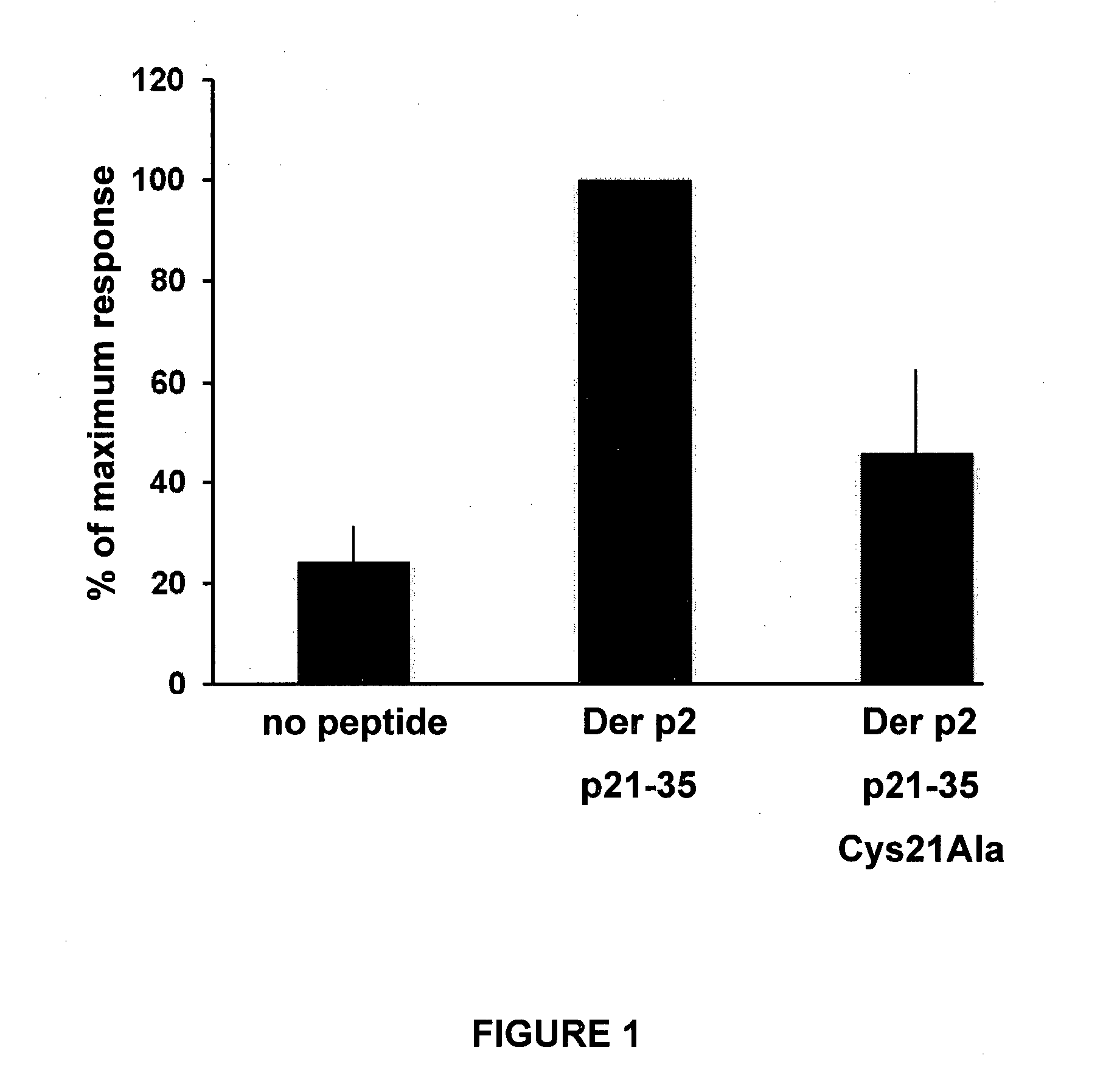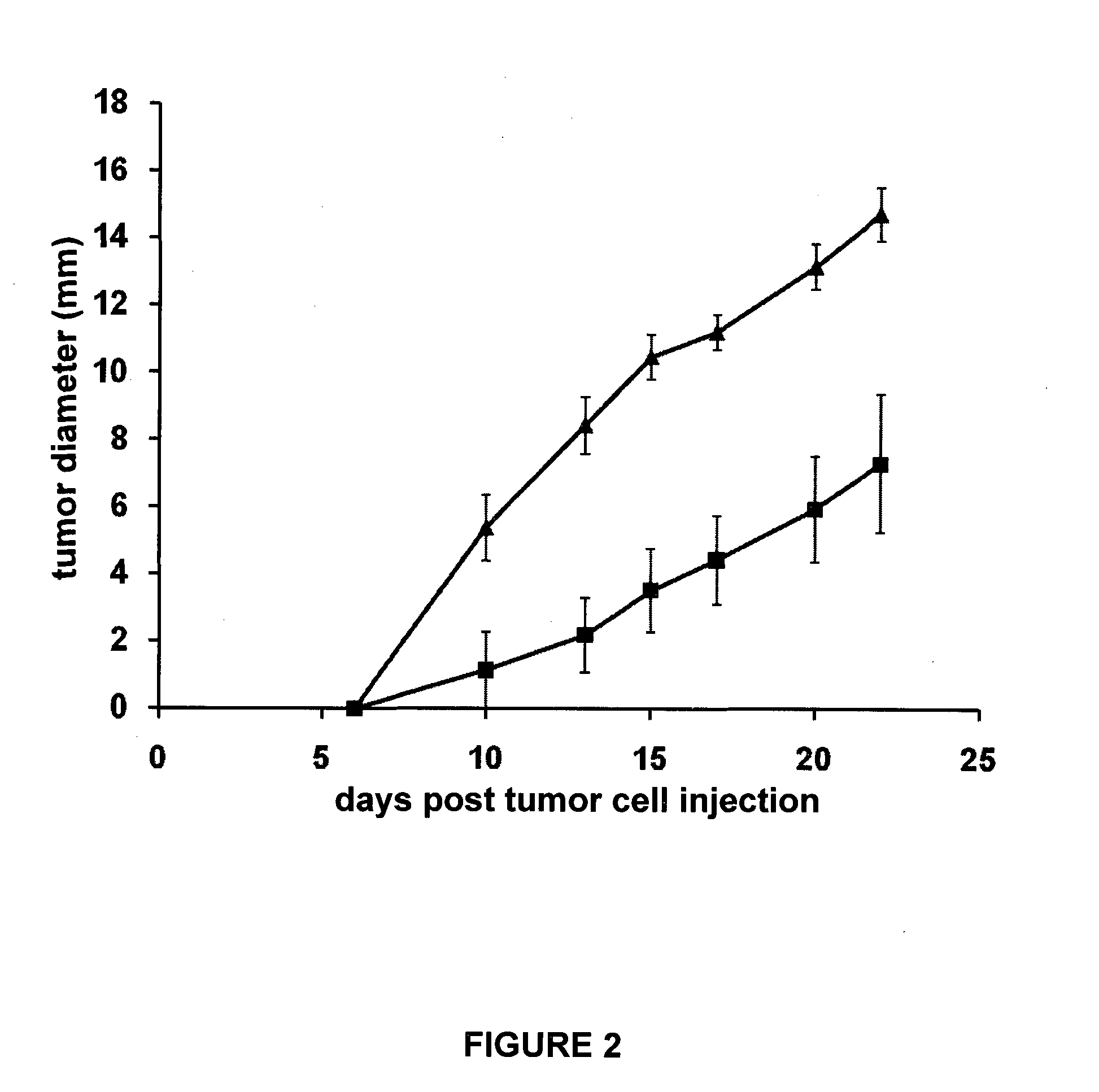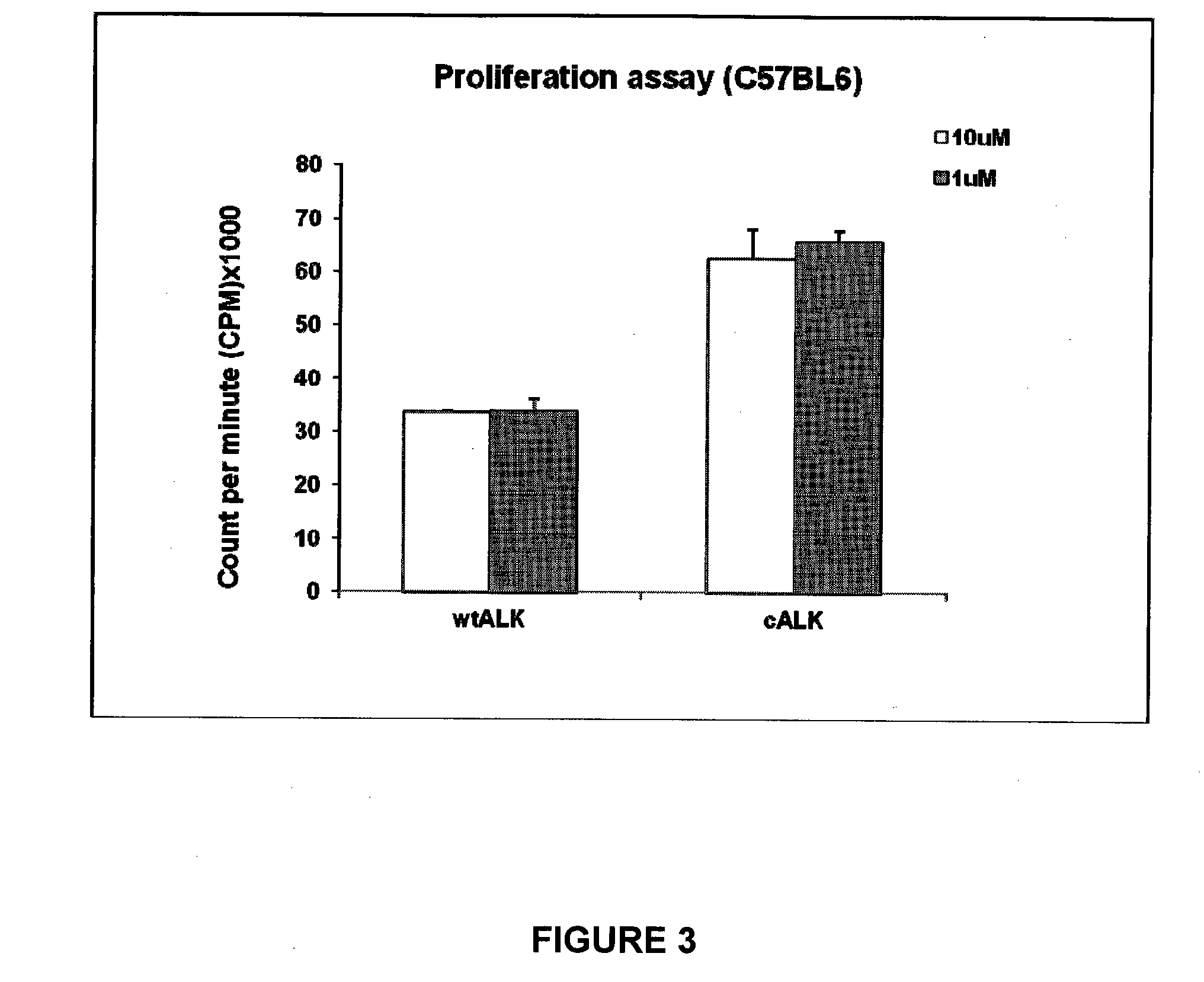Modified epitopes for boosting cd4+ t-cell responses
a technology of t-cell response and epitope, which is applied in the field of immunogenic peptides, can solve the problems of limited use of adjuvants, low percentage of antigen-specific regulatory t cells, and difficult cell expansion in vitro
- Summary
- Abstract
- Description
- Claims
- Application Information
AI Technical Summary
Benefits of technology
Problems solved by technology
Method used
Image
Examples
example 1
[0161]The house dust mite-derived allergen Der p2 is a 14 kD non-glycosylated protein containing a H-2b or H-2d restricted MHC class II epitope or sequence EPCIIHRGKPF (SEQ ID NO:1; amino acid residues 25-35 of Der p2) in which E corresponds to the first anchoring residue. Amino-terminal end flanking residues, of sequence CHGS (SEQ ID NO:2; amino acid residues 21-24 of Der p2), encompasses a monocysteinic glutaredoxin motif.
[0162]To determine whether the cysteine residue positioned in P(−4) increased the proliferative response of specific CD4+ effector T cells upon cognate interaction with antigen-presenting cells loaded with a peptide encompassing amino acids CHGSEPCIIHRGKPF (amino acid residues flanking the MHC binding site are underlined) (SEQ ID NO:3), each of the 4 amino acid residues of the flanking sequence was substituted into alanine.
[0163]T cell-depleted mitomycin C-treated splenocytes from naïve BALB / c mice were used as antigen-presenting cells and loaded with various mut...
example 2
[0164]The NPM-ALK chimeric gene encodes a constitutively activated tyrosine kinase that has been shown to be a potent oncogene. This fusion gene is composed of nucleophosmin (NPM) and a novel receptor tyrosine kinase gene, named anaplastic lymphoma kinase (ALK). Lymphoma cell lines derived from mouse strains made transgenic for the NPM-ALK fusion protein exhibit oncogenic properties. When inoculated in immunocompetent recipient, such cells develop aggressive tumors. Phenotypic assessment of such tumor cell lines show that they do not express class II major histocompatibility determinants, but are positive for class I MHC determinants.
[0165]C57BL / 6 mice were inoculated by subcutaneous injection of NPM-ALK tumor cells (2×106 tumor cells (R80 NPM-ALK cells, H-2b-restricted) suspended in 100 μl PBS and injected subcutaneously in the flank 10 days after the last peptide injection and the growth of the tumor was evaluated with a caliper. Usually, such mice develop tumors within 5-6 days, ...
example 3
[0166]Mycobacterium tuberculosis is responsible for thousands of deaths every year. The only available vaccination, the Calmette-Guérin Mycobacterium bovis-based vaccine (BCG), is not efficient. In addition, several Mycobacterium strains show resistance to conventional chemotherapy. Antigen-specific CD4+ cells are known to occur in tuberculosis (Winslow et al. (2003) J. Immunol. 170: 2046-2052), which can be protective (Khader et al. (2007) Nature Immunol. 8:369-377). M. tuberculosis produces a number of antigens that are presented by both MHC class I and MHC class II determinants. Antigens presented by class I determinants are recognized by CD8+ T lymphocytes, which carry a cytolytic activity aimed at eliminating cells infected with M. tuberculosis. However, in chronic carrier patients, this mechanism is not efficient enough to eliminate infected cells.
[0167]CD8+ T cells require help from other lymphocyte subsets and in particular cells belonging to the C...
PUM
| Property | Measurement | Unit |
|---|---|---|
| diameter | aaaaa | aaaaa |
| diameter | aaaaa | aaaaa |
| length | aaaaa | aaaaa |
Abstract
Description
Claims
Application Information
 Login to View More
Login to View More - R&D
- Intellectual Property
- Life Sciences
- Materials
- Tech Scout
- Unparalleled Data Quality
- Higher Quality Content
- 60% Fewer Hallucinations
Browse by: Latest US Patents, China's latest patents, Technical Efficacy Thesaurus, Application Domain, Technology Topic, Popular Technical Reports.
© 2025 PatSnap. All rights reserved.Legal|Privacy policy|Modern Slavery Act Transparency Statement|Sitemap|About US| Contact US: help@patsnap.com



